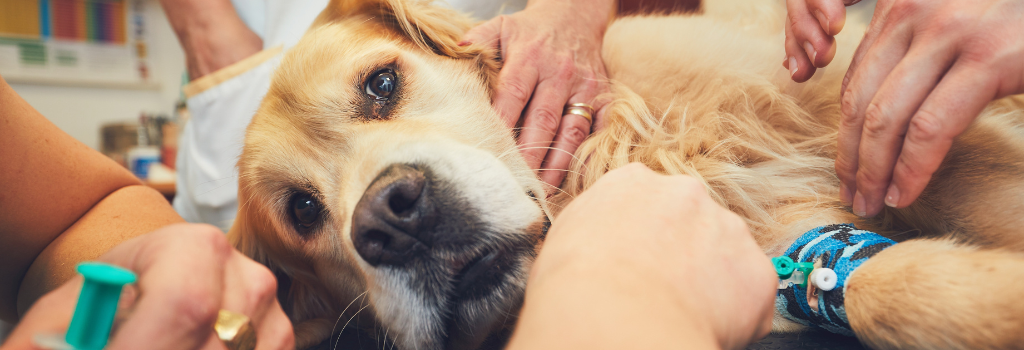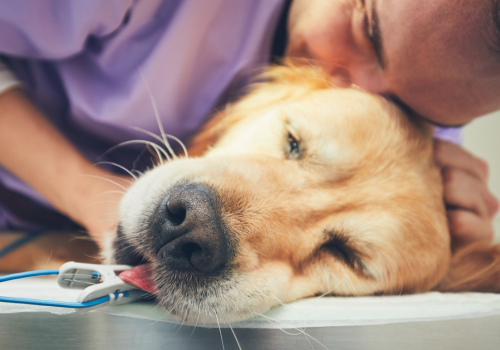The unfortunate truth is that if you own a dog, there’s a pretty good chance you will experience an emergency with that pet at one point or another. If you’re new to dog ownership, you may have even hopped online to find out what to do in case of emergency, and we commend you for doing your due diligence! At Tender Care Veterinary Center, we want to ensure that you’re getting the critical facts you need to keep your pet safe, especially when it comes to things like dog emergencies. To avoid misinformation you can find online from people who mean well but are not veterinarians, we’ve taken FAQs about dog emergencies and answered them as thoroughly and accurately as possible.
If you’re looking for a highly trained veterinarian in Fishersville, VA, we’d love to see your dog for what you may consider an emergency, so please call us right away at (540) 943-9080 .
What should I do if my dog is having an emergency?
You first have to know what constitutes an emergency for your dog. Most veterinarians will define an emergency as anything that warrants immediate attention or medical care. If that care is not provided, then it could have dire consequences, such as loss of life or a much sicker animal in the future.
Dog emergencies include but are not limited to the following:
- Major traumas
- Fractures
- Car accidents
- Blood loss, whether internally or externally
- Ingestion of toxins
- Pregnancy issues
- Birthing issues
- Bloating
- Seizures
- Breathing issues
- Sudden collapse
- A neurologic event
- Tremors
Also, ocular issues should nearly always be considered an emergency, as the eye is very unforgiving. Ulcers or injuries to a dog’s eye or eyes can mean the affected eye may have to be removed, so time is of the essence.
Now that you know what an emergency is, the first thing to do is get on the phone with your veterinarian. Contact them if it's during regular hours and your veterinarian's still open. If it's after hours, you can still call your veterinarian, and it'll typically roll over to their off-hours emergency line. Get on the phone with them, and see if there is something you can do at home that they can help you with. If so, that’s great, but nine times out of 10, it's going to be a situation where your veterinarian or an emergency clinic has to see your dog. At the very least, make them aware of what's going on and try to see how quickly you can get there so they can prepare.

What are some signs and symptoms that my dog might be experiencing an emergency?
There are many signs and symptoms that could indicate a canine emergency, so being aware of these is a critical part of responsible pet ownership.
Some signs and symptoms that your dog is experiencing an emergency are as follows:
- Sudden collapse
- Respiratory difficulties or distress
- Possibly open-mouth breathing (when they haven’t been doing anything to cause this, such as exercising)
- Seizures or tremors
- Diarrhea
- Vomiting, possibly with blood
- Broken bones
If the dog is bleeding externally, you and your veterinarian can see that, but what happens if the dog is bleeding internally? One good thing to get used to is checking the color of your dog's gums, as they should be just as pink as ours. If they’re not, that's telling you something. The dog may have ingested rat poison or even ruptured a splenic tumor, so checking the gums if you suspect something is wrong with your dog is a good idea.
Is it best to call an emergency hospital first before coming in?
Yes, it’s best to call whatever facility you’re bringing the dog to beforehand. If it’s after hours, call the emergency facility to give them a heads up that you’re coming. Depending on what their workload is at that given moment, it would be beneficial for them to have everything ready for what they might potentially treat. That way, the minute you walk in the doors, they're prepared for you. They have a table set up, heating pads, fluids, catheters, medications, anesthesia and they know whatever has to be done. They can get that ready to go in advance to save time and expedite the process.

Should I give my dog first aid at home, and what should I have in my first aid kit?
This is a loaded question for veterinarians, as you can do more harm than good. However, if it’s possible for you to administer first aid for a pressing issue, do it. As veterinarians, though, we have to ask—what is that going to look like? Blood loss is the most obvious thing that comes to mind, so if you have a dog that has received some sort of a laceration, or anything that would cause external blood loss, then go ahead and administer a bandage or wrap that area to keep pressure on it.
As a warning, though, remember that if a dog is in a traumatic situation, they are not in their normal state of mind. Even though you are their owner and they're very comfortable with you—if they're hurting, struggling to breathe, or in distress, they will react differently than they will on any other occasion. In other words, don't put yourself in harm’s way. If you can administer first aid safely, then do so, but if you think you may get bitten in the process, don’t try it. In that case, scoop the dog up, wrap them in a towel or blanket, put them in a carrier, and get to your veterinarian as soon as possible. We’re familiar with handling situations like that more than the average human.
The American Kennel Club (AKC) has an excellent list of items you might want to have in your first-aid kit for dogs.
How will a veterinarian treat my dog in an emergency?
In any canine emergency, the priority is to stabilize the dog. We're going to check their vitals. If the dog is dehydrated or has experienced blood loss, then we're going to stabilize that pet first, and what does that mean? We use an IV catheter and push IV fluids at a good rate. If they require oxygen, we get them on oxygen therapy immediately to stabilize. Once we get that dog stable (meaning their heart rate and breathing are steady and we're not at risk of losing them in the near future), then we start looking at diagnostics like blood work, x-rays, ultrasound, and whatever else we need to figure out what's going on.
Why is prompt treatment in an emergency so important for my dog’s health?
Well, it’s the very nature of an emergency—if we don’t handle it quickly, injury or death might occur. The dog must get treated sooner rather than later. If you're in doubt, call your veterinarian, tell them what's going on, and even send a video if you have to—whatever it takes to relay that information. It may very well turn out to be what your veterinarian doesn’t consider an emergency, but it’s best to err on the side of caution.
How do you perform CPR on a dog?
CPR for pets is very similar to what you can imagine in humans in the way that we give cardiac compressions over the thorax to help the heart pump. We'll give breaths. Then, after we intubate with a tube, we start some fluids to help perfusion and administer any emergency drugs the dog needs.
If you live in or near Fishersville, VA, we’d love to care for your dog and better prepare you in case of an emergency. Please don’t hesitate to call us at (540) 943-9080 or email us at [email protected].
